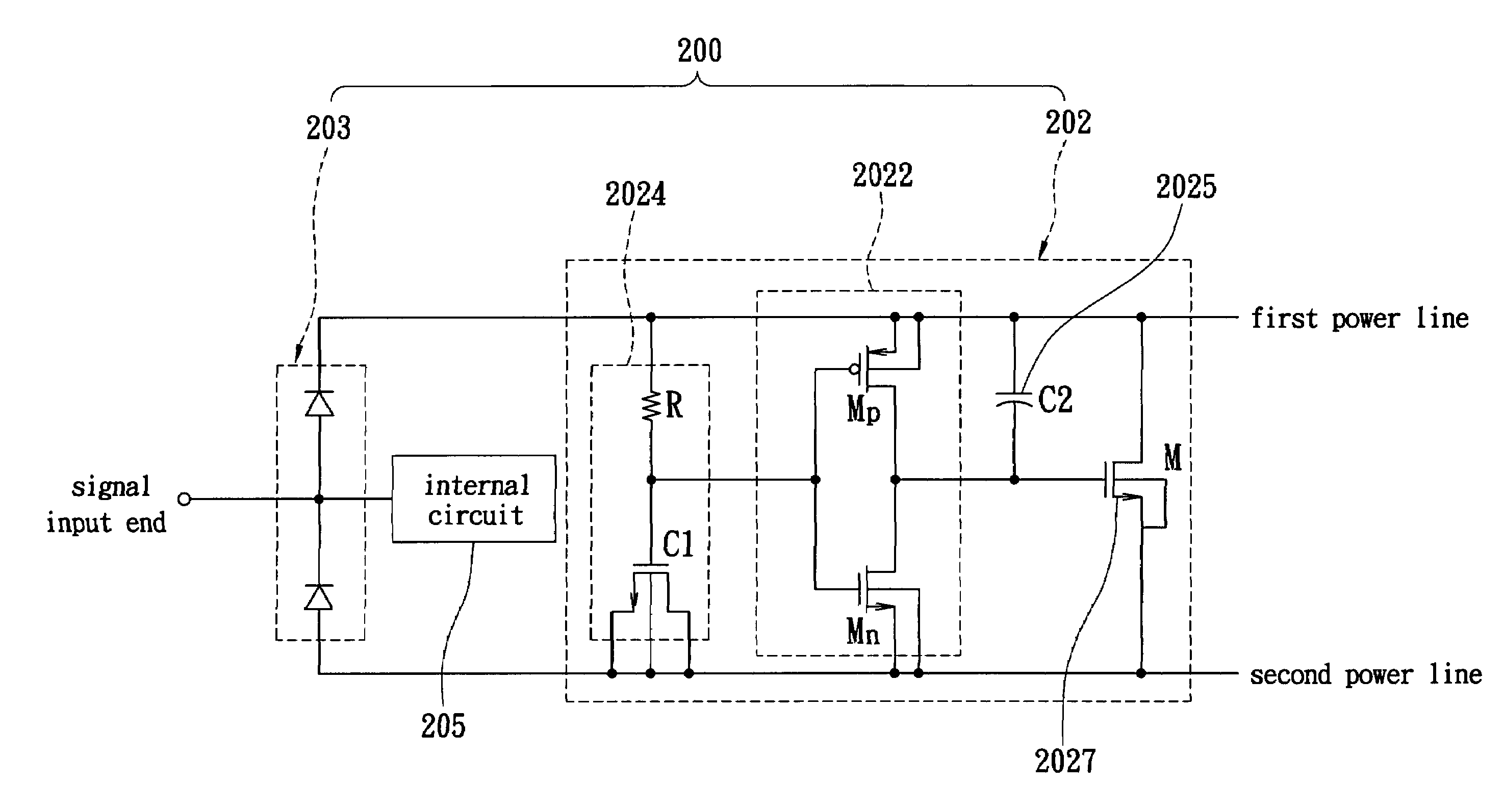Protection circuit for electro static discharge
a protection circuit and electrostatic discharge technology, applied in the direction of emergency protective arrangements for limiting excess voltage/current, emergency protective arrangements for limiting excess voltage, etc., can solve the problems of abnormal operation of electronic devices or systems, damage to devices and computer systems, and damage to electronic devices or systems by electrical overstress, so as to reduce the occupied area of a single fet component and reduce the equivalent resistance between drain and source
- Summary
- Abstract
- Description
- Claims
- Application Information
AI Technical Summary
Benefits of technology
Problems solved by technology
Method used
Image
Examples
Embodiment Construction
[0028]Please refer to FIG. 5, which shows a schematic diagram of an ESD protection circuit complied with the present invention. The ESD protection circuit has an ESD clamp circuit and at least a pair of p-n junction diodes 203 to prevent the internal circuit 205 from damaged by the ESD (mainly in HBM or MM) induced at the signal input end.
[0029]The ESD clamp circuit 202 includes a CMOS inverter (Mp and Mn) 2022, a RC retarder 2024 (the capacitor C1 is carried out by using a MOS component), a coupling capacitor 2025 (C2) and a FET 2027 (M). Therein, the coupling capacitor C2 is coupled to the FET M. Meanwhile, the drain of the FET M has no silicide block disposed thereon (as shown in FIG. 3a). In the conventional ESD protection circuit, in order to increase the resistance between the drain and source of a FET to restrict the ESD current, the FET must have the silicide block (as shown in FIG. 3b). The ESD protection circuit complied with the present invention has no silicide block and...
PUM
 Login to View More
Login to View More Abstract
Description
Claims
Application Information
 Login to View More
Login to View More - R&D
- Intellectual Property
- Life Sciences
- Materials
- Tech Scout
- Unparalleled Data Quality
- Higher Quality Content
- 60% Fewer Hallucinations
Browse by: Latest US Patents, China's latest patents, Technical Efficacy Thesaurus, Application Domain, Technology Topic, Popular Technical Reports.
© 2025 PatSnap. All rights reserved.Legal|Privacy policy|Modern Slavery Act Transparency Statement|Sitemap|About US| Contact US: help@patsnap.com



